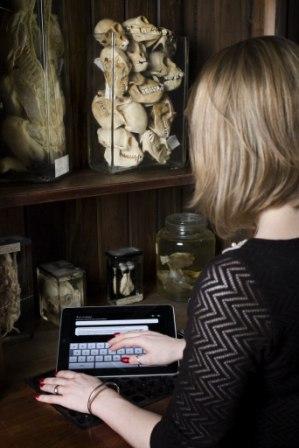New AHRC Project at UCLDH: CHIPS – Computer Human Interactive Performance Symposium
By ucacngo, on 28 March 2012
As part of our expanding programme of research and teaching in computational musicology and computer music at UCL, we are pleased to announce a new AHRC-funded project (prospective PhD and MA/MSc Digital Humanities students may like to note this activity, particularly the COMPGC20 Computer Music module available as an option on the DH degree).
The Computer-Human Interactive Performance Symposium (CHIPS) project is funded by the UK Arts and Humanities Research Council (AHRC) through the Digital Transformations programme. The project runs from February to August 2012.
The aim is to explore the likely performance practices (and problems) that would result from having easily deployable, robust, creative, and reliable artificial music performers in mixed human-computer ensembles playing popular music. There are many systems that go some way to solving the technical problems of computer participation in this kind of music (e.g. beat trackers, chord estimators, interactive improvisers) but as yet no complete systems that can be deployed by non-expert users into common practice performance contexts and be relied upon to underpin the performances of popular music ensembles.
Popular music (e.g. folk, rock, music theatre) plays a central role in the lives of millions of people. Musicians of all standards from amateur to professional produce music that is heard on radios and televisions, and performed in concert halls and theatres. Teenagers are motivated to learn instruments and play in bands to emulate their professional idols, serious amateurs play and sing together at open-mike nights, charity concerts, and in churches, and professionals perform in clubs, theatres, and spectacular multimedia shows like Cirque du Soleil and the Blue Man Group. To learn, rehearse, and perform popular music often requires a musician to be part of an ensemble yet forming such a group can be challenging, particularly for amateur musicians. Even in established communities such as churches, the demands of everyday life mean that musicians cannot always attend rehearsals or play regularly together. In professional ensembles, illness can cause the absence of key musicians in rehearsal or performance. Computer music technology offers the potential to substitute for musicians in these situations, yet reliable, robust, and simple systems that can be quickly set up, and that play musically and creatively do not yet exist.
The project aims to develop the future research agenda for both technical and non technical music computing research in this area, by learning from the issues and experiences of technological adoption in other relevant performance contexts, understanding the technological state of the art in relation to popular music performance, imagining future performance practices incorporating computer “musicians”, and thinking about how to study musicians (human and computer) in this context.
We hope to develop a network of interest around this symposium, beginning with some online discussion ahead of the face to face event on 7th-8th June 2012 and followed by further online activity and follow-up events. For information, the programme, and registration for the main symposium (presented as part of the CREST Open Workshop (COW) programme), please see the COW web-page here.
 Close
Close



